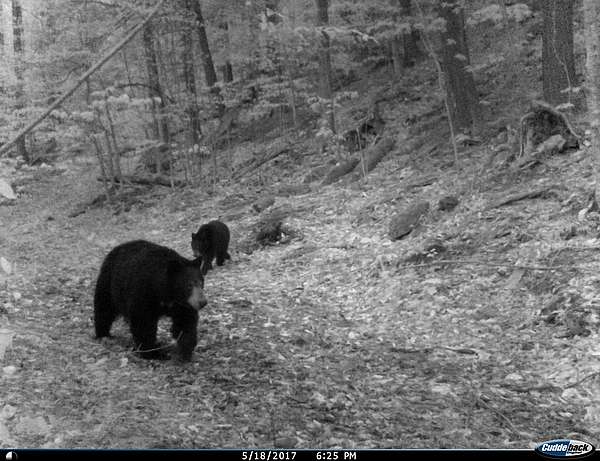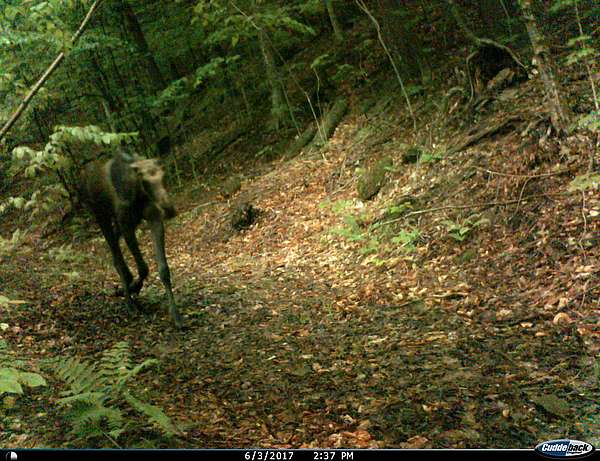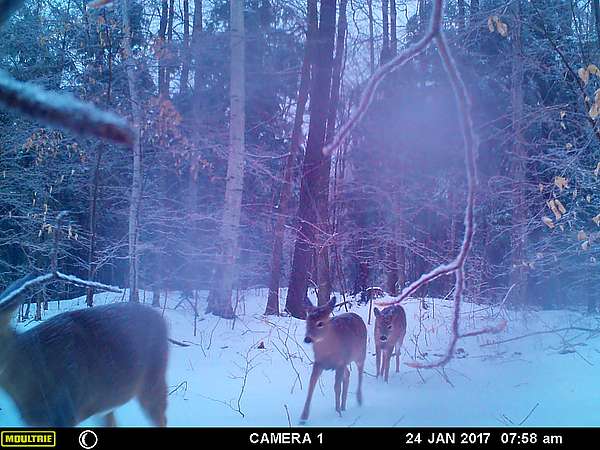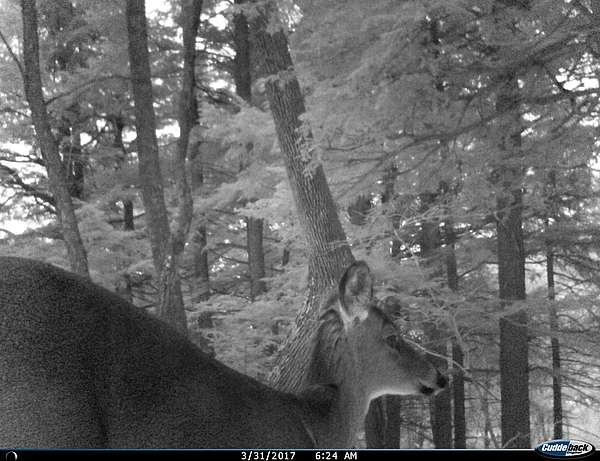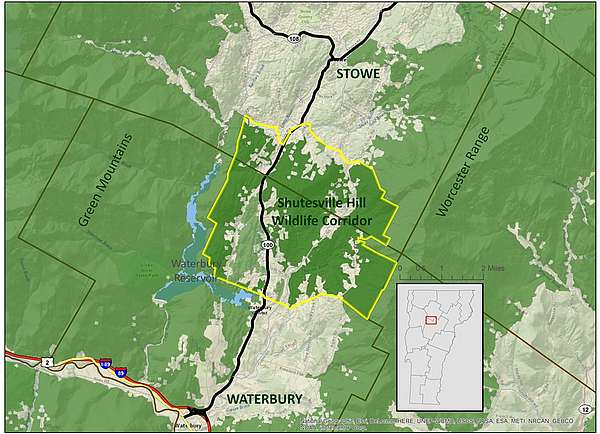Late last spring, on a ledgy hillside in the heart of the Shutesville Hill Wildlife Corridor, we unexpectedly came upon a mother bear and her two cubs.
Wary of our presence, the mother scooted up a tall oak and urged her cubs to follow. Before moving on, we took a minute to watch the cubs inch up after her, their short arms and legs barely spanning the girth of the oak’s big trunk.
As staff of Stowe Land Trust and the Vermont Land Trust, we were on that hillside at the landowner’s request to consider conservation options for the property. Even before our visit, we were quite sure that this land was an important piece in the puzzle of privately owned land that forms a network of forest cover for wildlife moving between the Worcester Range and Green Mountains.
But encountering the bears on the land brought home just how important the corridor is to wildlife on the move and why more landowners there are asking about conservation options.
The Stowe and Vermont land trusts have each been permanently protecting productive farms and forestland, critical habitat, recreation land, and other important natural resources for decades.
When our land trusts permanently protect land, we are typically working with interested landowners to place a permanent conservation easement on their property. While the land trust holds a legal interest that eliminates or restricts development and subdivision, the land remains privately owned and the owner still pays property taxes.
The conservation easement allows uses that are compatible with protecting the conservation values of the land, such as timber management, maple sugaring, or trail building. While some conservation easements also guarantee public recreation, access to conserved private forestland often continues to be the decision of current and future owners. Each property is different, and each easement is tailored to meet the landowner and land trust’s interests.
In the case of forestland protection, funding is limited and easements are typically fully or partially donated. Landowners can usually take advantage of charitable income-tax deductions for the value of their donation, but they are almost always motivated by leaving a legacy, making a difference, and ensuring that their land is cared for after they are gone.
Permanent land protection is just one way to help protect this wildlife corridor. Education, planning and zoning, and local economies based on the working landscape and outdoor recreation all help.
Small properties and those in growth centers are not typically well-suited for permanent land protection. Which is part of what makes protecting the Shutesville Hill Wildlife Corridor such an interesting, and urgent, challenge. Small parcels, such as those along key road crossings, can be as ecologically important as larger parcels farther from the road. Critical properties within the corridor string together a network of connected habitat; protecting just one or a few properties alone is not enough to ensure that the corridor stays open and safe.
Fortunately, it’s not too late.
If we act now, we still have a chance to protect this critical wildlife corridor — one of the most important in the state, let alone the region. Landowners are learning more about permanent conservation options, and many are inspired to protect the habitat that supports the wildlife they see on their land, like that bear and cubs we saw on the oak-filled ledge.
Helping to protect the connection between vast wildlife habitat in the Worcester Range and Green Mountains, they have the opportunity to be part of something larger than their own properties, and they are hoping to inspire others to consider doing the same.
Kristen Sharpless is executive director of Stowe Land Trust. Bob Heiser is the Champlain Valley regional director at the Vermont Land Trust.
